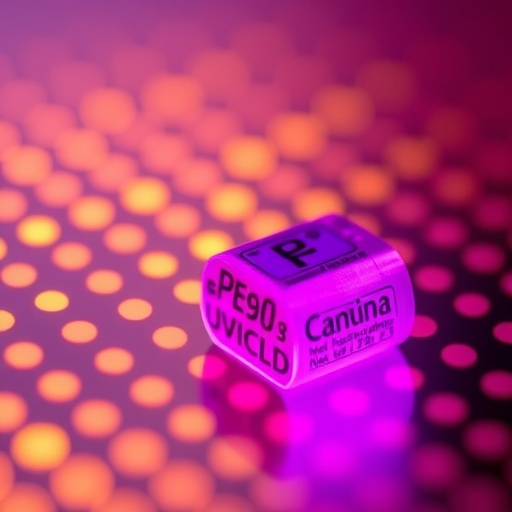The world of display technology is poised for a significant transformation, thanks to innovative research being conducted by Dr. Jiho Shin, a chemical engineering professor at Texas A&M University. His collaboration with an international team explores the groundbreaking potential of micro light-emitting diode displays, or micro-LEDs. This emerging technology promises to enhance not only device performance but also user experience across various electronic applications. The shift from traditional organic light-emitting diodes (OLEDs) to micro-LEDs represents a notable advancement, as these micro-LEDs employ microscopic inorganic materials that significantly increase durability and longevity.
The essence of micro-LED technology lies in its pixel composition. Unlike OLEDs, which leverage organic materials that can degrade over time, micro-LEDs are built using inorganic components. This fundamental difference grants micro-LEDs superior robustness, making them more resilient to degradation and enabling longer lifespans. In his comprehensive review published in the esteemed journal Light: Science & Applications, Dr. Shin and his colleagues evaluate the micro-LED landscape, shedding light on its transformative potential while pinpointing the manufacturing challenges that currently hinder its widespread adoption.
The implications of micro-LED technology are vast, extending to realms such as virtual reality (VR) and augmented reality (AR). These applications demand high-resolution, vivid imagery packaged into compact and sleek devices. Micro-LEDs can revolutionize the visual quality in VR headsets and AR glasses, which require bright, clear displays to create immersive experiences. Dr. Shin emphasizes that addressing the manufacturing hurdles associated with micro-LEDs will be instrumental in realizing these ambitious applications and driving them into practical use on a larger scale.
However, developing these tiny LEDs presents unique challenges. One of the primary issues faced by researchers is that the illumination intensity diminishes as the micro-LEDs are scaled down. Dr. Shin likens this phenomenon to a flashlight growing dimmer when it is made smaller, particularly affecting the red pixels which are crucial for achieving full-color displays. The quest for more efficient light generation technologies becomes ever more crucial to overcome this constraint, ensuring that brightness levels can meet user expectations despite the miniaturization of LEDs.
To tackle this issue, the research team is exploring various material compositions and innovative methodologies. By experimenting with different materials, they aim to enhance the luminosity of micro-LEDs, ensuring they can shine brightly even at reduced sizes. Techniques such as employing lasers to precisely position micro-LEDs or utilizing specialized liquids to guide them into their designated locations are part of the research strategy. These advanced manufacturing techniques not only aim to solve the brightness challenge but could also facilitate more accurate and faster assembly of micro-LED displays—a necessity for scaling production.
Another fascinating component of this exploration centers around developing microscopic assembly lines to enhance manufacturing efficiency. Such a mechanism would offer marked advantages over existing assembly methods and could play a pivotal role in streamlining the production process of micro-LED technology. As consumer electronics continue to evolve with increasing demands for superior display quality, these innovations in micro-LED manufacturing could redefine how consumers interact with their devices, including smartphones, tablets, and laptops.
To garner public interest and awareness, Dr. Shin highlights the critical role of micro-LEDs in our everyday lives. Their potential applications extend beyond conventional devices, hinting at a future where displays are transparent, flexible, and seamlessly integrated into everyday objects. By choosing to focus on micro-LED exploration, the research resonates with broader market trends that aim to create devices with enhanced functionality and aesthetics.
The collaborative efforts involve experts from various prestigious institutions such as the Massachusetts Institute of Technology and Sungkyunkwan University, demonstrating a collective commitment to advancing the field of display technology. By pooling knowledge and resources, these researchers aim to address the multifaceted challenges associated with micro-LED displays, enhancing the likelihood of overcoming obstacles that impede their commercial viability.
As the research continues to evolve, an exciting landscape is emerging that beckons innovative contributions from the scientific and engineering communities. Dr. Shin’s findings and future work could play a crucial role in charting the course for micro-LED technology, paving the way for novel applications that could one day permeate various aspects of our lives.
The future of display technology lies at the intersection of creativity and engineering innovation. As researchers like Dr. Shin unravel the complexities of micro-LEDs, we stand on the precipice of experiencing a new wave of display applications that could redefine how we perceive visual information. Whether in entertainment, communication, or professional settings, the adaptation and implementation of micro-LED technology could yield extraordinary advancements, ushering in a new era of display possibilities.
In conclusion, the exploration of micro-LED displays spearheaded by Dr. Jiho Shin signifies a monumental step toward revolutionizing visual technologies. As research progresses, the practical implementation of these technologies may soon become a reality, reshaping our interaction with electronic devices and enhancing our daily experiences in unprecedented ways.
Subject of Research: Micro Light-Emitting Diode Displays (micro-LEDs)
Article Title: Future trends of display technology: micro-LEDs toward transparent, free-form, and near-eye displays
News Publication Date: 22-Sep-2025
Web References: Link to the article
References: Light: Science & Applications
Image Credits: N/A




